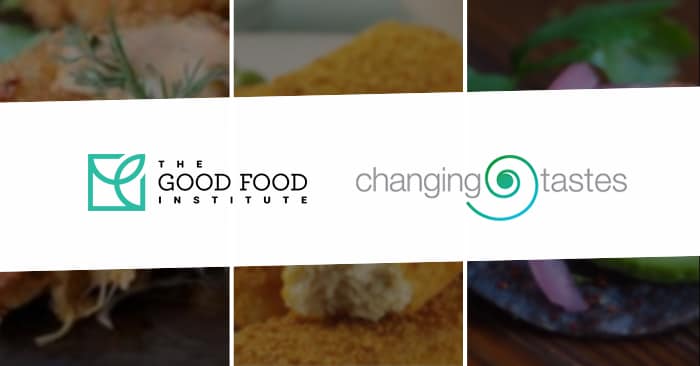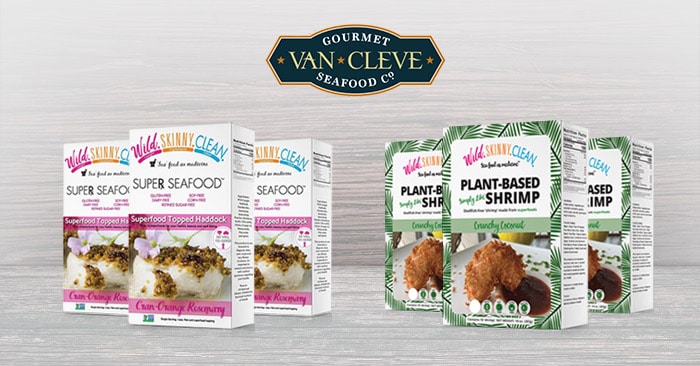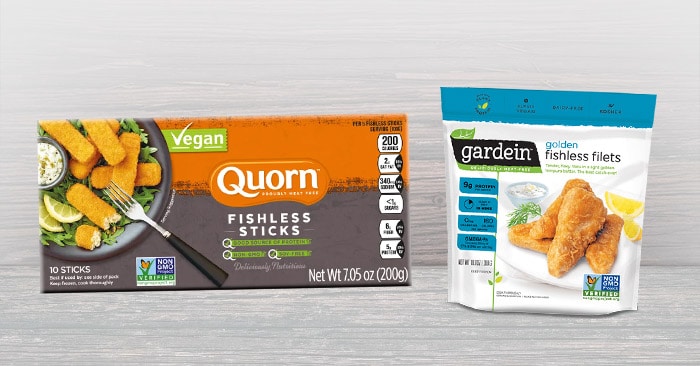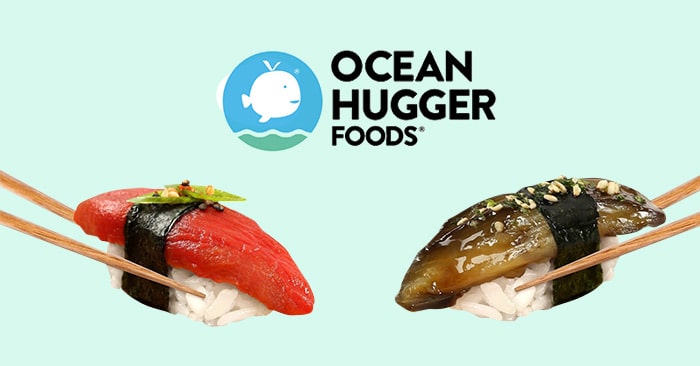GFI Reports: “Tricky” Seafood Industry Carves Opportunity for Alternatives

As many consumers aim to reduce or eliminate red meat from their diets, seafood is becoming a popular choice for mealtime. But faced with a limited supply of fish, plant-based and cultivated meat makers are recognizing a wave of opportunity for alternative seafood innovations, according to industry nonprofit The Good Food Institute (GFI).
The plant-based seafood market comprises only $9.5 million (1%) of total plant-based meat dollar sales, according to a recent report by the GFI and research firm SPINS. Most of its revenue is dominated by a handful of alternative seafood brands — including startups and industry stalwarts like Quorn and Gardein. Most of these companies offer frozen, breaded options; but moving forward, GFI sees potential for more varieties of cell-, plant- and fermentation-based fish and seafood analogues — especially ready-to-eat products that mimic tuna, salmon and shrimp.
GFI predicts the category’s growth will accelerate if retailers position alternative seafoods with their conventional counterparts, as seafood demand is expected to increase 30% from 2010 to 2030.
“If we want to provide seafood to everyone who wants it we need to think a bit bigger,” Jen Lamy, GFI’s sustainable seafood initiative manager, said in a recent webinar.
Some brands and investors are already riding the wave: investment in fish and seafood analogues more than doubled during each of the last four years, GFI found, with $45 million invested in 2019 and $35 million already invested in the first half of 2020. Earlier this year, cell-based seafood brand Blue Nalu raised $20 million in Series A funding, the highest cultivated meat fundraise at the time (since exceeded by Memphis Meats.)

Big CPG companies are also seeing promise in bringing alternative seafood mainstream; for example, meat producer Tyson invested in plant-based shrimp startup New Wave last year through its venture arm, Tyson Ventures. Others are betting on their own plays: Bumble Bee recently inked a partnership with plant-based seafood brand Good Catch, and seafood company Van Cleve launched plant-based shrimp and crab cake brand Wild Skinny Clean last year. Having existing relationships with retailers and knowledge of the seafood category, GFI found, can be a major advantage in gaining shelf space and attracting consumer interest.
“They’re able to leverage their connections and their own internal understanding of what good shrimp should taste like,” Lamy said. “[They] have been able to put out a really successful new line of products because of that.”
Lamy added that one major advantage is that alternative seafood items are “controllable and predictable,” and alternative seafood brands can operate facilities closer to their demand (rather than just on the coasts), quickly respond to demand shifts and reduce waste by only producing what they need. They also can promise retailers more consistent pricing, margins and supply.

Despite an uptick in cooking during the pandemic, consumers are still seeking ready-to-eat products, said Arlin Wasserman, founder and director of industry advisory firm Changing Tastes. During the webinar, he explained that pre-breaded, ready-to-eat fish and seafood and packaged smoked fish remain the most popular seafood items because they don’t require cooking — a trend plant-based brands could build on, he noted. When first going after chicken, for example, many plant-based products turned to nugget or patty products rather than launching plant-based chicken breasts, which would require more R&D efforts.
At the same time, Wasserman said the category lacks a “killer item” like a burger that customers crave, making it harder for plant-based seafood brands to capture a consumer’s taste buds from the shelf. Among the 200-300 sea species consumers eat, there’s still great opportunity for innovation, including salmon filet, clam, squid, lobster, mahi mahi and swordfish analogues, said Caroline Bushnell, GFI’s associate director of corporate engagement. She added that consumers are becoming more adventurous in trying things like octopus as well. There’s additional opportunity for cultivated products with similar nutritional profiles as seafood, especially omega-3s and other fatty acids, said Claire Bomkamp, GFI’s senior scientist of cultivated seafood specialization.
“There remains a massive opportunity for innovation that can achieve the flaky and delicate texture of a fish filet,” Bushnell said.
To boost growth, alternative seafood companies should eventually move beyond frozen and shelf-stable products so they can sit in the seafood section and increase visibility, Bushnell said, much like the alternative milk and meat categories. Ultimately, alternative seafood can become less expensive than conventional seafood because its production will be sustainable, she added.

That sustainability may appeal to consumers even more than before. The pandemic further highlighted the opportunity for these alternatives from both consumers and retailers, Wasserman said: 70% of seafood and fish is consumed in restaurants, and many distributors who lost that revenue during the pandemic may seek more sustainable alternatives. At the same time, foodservice closures also impacted four year-old plant-based tuna and eel brand Ocean Hugger, which ceased operations last month.
“We believe that the need for sustainable, ethical, and healthy food offerings has never been more critical, and that the opportunity for businesses addressing this need is extraordinarily promising,” cofounders David Benzaquen and James Corwell wrote in a statement. “We hope that our success as a pioneer in plant-based seafood will inspire new entrepreneurs to take action.”
Although startups likely spent less time in R&D labs during the pandemic, they should have plenty of steam ahead, Lamy said. After witnessing supply chain issues, consumers are more concerned with food manufacturing, and seafood is a “massive global commodity” that often has employees in close quarters from fishing vessel to production, she said. There’s equal room for cell-based and plant-based innovations, she noted.
“The case for alternative seafood is continuing to grow as we look to make sure that the food system we continue to build is resilient for future crises,” Lamy said. “There’s no reason to think we can’t compete with conventional seafood on price — especially as fish in the sea become more and more scarce.”













